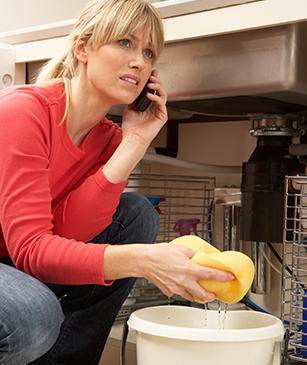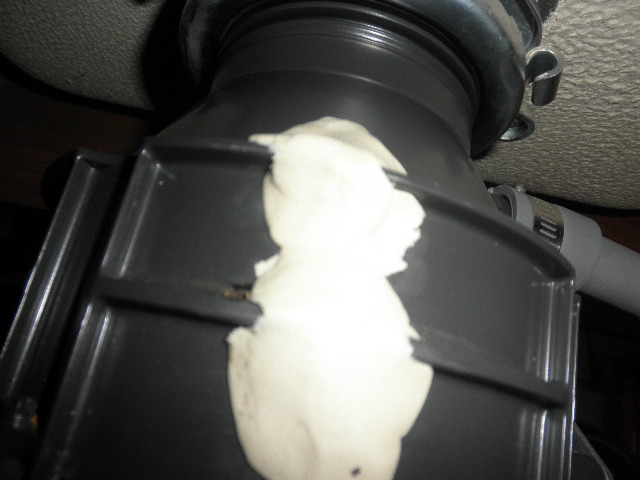My Definitive Guide to Fixing a Leaky Waste Disposal Unit
My Definitive Guide to Fixing a Leaky Waste Disposal Unit
Blog Article
The writer is making a number of good pointers on the subject of Garbage Disposal Leaking From Bottom in general in the article down the page.

Garbage disposals are vital kitchen appliances that aid in dealing with food waste successfully. However, a dripping garbage disposal can be an irritating and messy trouble to take care of. Fortunately, several leaks can be dealt with easily with a couple of basic actions. In this post, we will talk about how to deal with a dripping waste disposal unit successfully.
Introduction
Garbage disposals are set up under kitchen sinks and are designed to shred food waste into smaller pieces, allowing it to pass through the pipes system quickly. While these tools are typically trustworthy, leaks can take place gradually as a result of wear and tear, loosened connections, or damages to the unit.
Step-by-Step Overview to Repairing a Leaking Waste Disposal Unit
Turn Off the Power
Before attempting any type of repairs, ensure that the power to the garbage disposal device is turned off to stop the threat of electric shock.
Locate the Leakage
Identify the precise area of the leak and determine the cause
Tighten up Links
Utilize a wrench to tighten any loose connections in between the disposal device and the plumbing system.
Replace Seals or Gaskets
If the leak results from worn seals or gaskets, remove the old elements and replace them with new ones.
Patching Splits or Openings
For fractures or openings in the disposal device, usage epoxy or a suitable patching product to seal the damaged location.
Identifying the Source of the Leak
Prior to attempting to fix a leaking garbage disposal, it is important to identify the resource of the leakage. This can usually be done via visual evaluation or by performing basic tests.
Visual Examination
Examine the garbage disposal unit thoroughly for any type of indicators of water leakage. Pay very close attention to areas around seals, gaskets, and link factors.
Evaluating for Leakages
One method to examine for leakages is by running water with the disposal device and looking for any type of noticeable indications of leakage.
Typical Reasons For Leaks in Trash Disposals
Worn Seals and Gaskets
Seals and gaskets play a crucial role in stopping water from leaking out of the waste disposal unit. With time, these parts can deteriorate, causing leaks around the disposal system.
Loose Connections
The links in between the waste disposal unit and the pipes system can come to be loosened gradually, causing water to leakage out during procedure.
Fractures or Openings in the Disposal System
Physical damage to the garbage disposal, such as cracks or openings in the real estate, can likewise result in leakages.
Tools and Products Needed for Fixing a Leaking Garbage Disposal
Before beginning the repair service procedure, collect the required devices and materials, consisting of a screwdriver, adjustable wrench, plumbing's putty, substitute seals or gaskets, and epoxy or patching material for fixing fractures or openings.
Examining the Waste Disposal Unit After Fixing
When the fixing is complete, test the garbage disposal by running water with it to make sure that the leak has actually been settled.
Preventive Maintenance Tips to Avoid Future Leaks
To prevent future leakages, it is essential to carry out normal upkeep on your garbage disposal. This consists of keeping it tidy, preventing putting non-food things or hard things down the disposal, and occasionally checking for leakages or other problems.
Verdict
Finally, dealing with a leaking waste disposal unit is a reasonably simple procedure that can be finished with fundamental tools and materials. By following the steps described in this write-up and practicing preventive maintenance, you can keep your waste disposal unit in good working condition and stay clear of expensive repairs in the future.
What to Do About a Leaking Garbage Disposal
A leaking garbage disposal often goes unnoticed until you confront a sopping cabinet, a foul-smelling puddle, or an audible drip-drip-drip from the unit. The fix can be frustrating, too, because the leak can stem from a number of components in the system. Fortunately, with a little sleuthing, you can zero in on the leak and—depending on the exact location—stop the icky oozing and repair the component that caused it. Worst case scenario, if it turns out that the garbage disposal must be replaced, installing a new one is a reasonable do-it-yourself task for those with basic plumbing skills. Read on to keep the cash you’d otherwise hand over to a pro.
Prepare to find the leak
Prior to testing the garbage disposal for leaks, unplug it at the wall outlet and turn off the power from the breaker box to prevent electrical shock. Then insert a watertight sink stopper into your sink drain and wipe the unit dry with a clean cloth. In any handy container, mix a few drops of food coloring into a few cups of water, and pour the dyed water onto the sink stopper to help you locate the leak.
Investigate the source
the top, where the disposal meets the sink drain the side, where the dishwasher hose or main drain pipe connects to the disposal or the bottom of the unit Inspect each of these locations while gliding a light-colored rag over the unit; the dyed water will readily show on the rag and reveal the location of the leak. If a leak isn’t immediately apparent, remove the sink stopper and pour a few more cups of dyed water down the sink drain, then check for leaks again. Leaks near the top of the unit are more likely to show themselves while the sink is plugged, while side and bottom leaks are more noticeable while the sink is unplugged.
The metal sink flange that sits directly inside the sink drain is typically sealed around the top with plumber’s putty (a clay-like sealant) and then secured from under the sink with bolts. If the plumber’s putty deteriorates, or the bolts loosen, the flange can no longer form a watertight seal between the sink drain and the disposal—which could cause a leak at the top of the unit.
To reseal the leaky flange, you must first detach the garbage disposal. Start by loosening the screws securing the main drain pipe to the disposal, then loosen the screws in the metal clamp securing the dishwasher hose to the disposal and detach the drain pipe and dishwasher hose from the disposal. Loosen the screws in the mounting ring that connects the disposal to the metal mounting assembly beneath the sink, then pull down the disposal and carefully set it on a clean, dry surface. Loosen the bolts in the mounting assembly with a wrench, then pull down the mounting assembly and set it near the disposal.

Do you like reading up on The Handy Guide To Fixing Your Garbage Disposal Leaking? Post a remark down the page. We will be delighted to find out your responses about this article. We are looking forward to see you back again later on. Enjoyed our piece? Please share it. Help someone else locate it. Thanks for taking the time to read it.
Make An Appointment Report this page